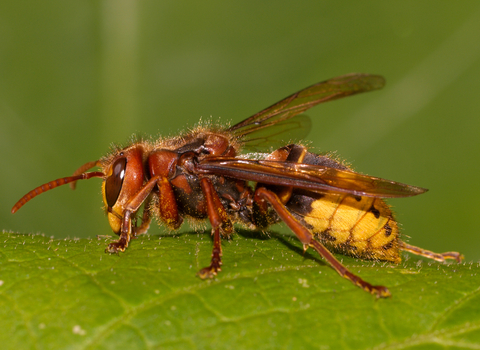
Hornet ©Erik Jørgensen
Hornet
The fearsome-looking hornet may not be a well-loved insect, but it is actually much less aggressive than the common wasp. It is also an important pollinator and a predator of species that feed on plants and crops, so can be a gardener's friend.
Enw gwyddonol
Vespa crabroPryd i'w gweld
May to NovemberTop facts
Stats
Length: up to 3.5cmCommon.
